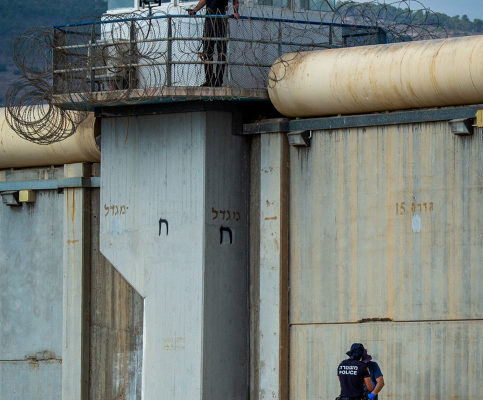For one, the request of a Fatah inmate to transfer to a cell holding rival Islamic Jihad prisoners should have lit a red light for officials, said a former commander.
By Batya Jerenberg, World Israel News
The ongoing investigation into how six senior Palestinian terrorists managed to escape the high- security Gilboa prison Monday has already revealed several lapses on the part of the Israel Prison Services (ISP).
Channel 13 reported Wednesday night that guards didn’t know that prisoners had recently transferred cells, including one of the escapees. This led to confusion and delay during the nightly head count.
As one former Prison Services official told Maariv, at first the guards thought only three prisoners had gotten away when the number was really six.
However, the very fact that any transfer took place at all showed a grave lapse of judgment on the part of prison officials, according to the recently retired commander of all northern region prisons.
Maqbel Tapash told Ynet, “Such a request is supposed to light a huge spotlight, not just a flashlight. It is illogical and unreasonable. It was necessary to check what was behind his request and not pass it on until it was checked.”
This is because the prisoner, Zakaria Zabeidi, was the former commander of Fatah’s al-Aqsa Martyrs Brigades in Jenin, and he was allowed to join a cell containing five members of the Palestinian Islamic Jihad (PIJ). The two groups are bitter rivals.
Another issue was the fact that such an escape takes time to carry out. Even though ISP head Katy Perry said that the prisoners took advantage of empty spaces under their cells and the way the sewage tunnels were built in the old structure, which required very little digging, the planning and work likely took weeks, if not months.
After a failed prisoner breakout from Gilboa Prison in 2014, Tapash said that “part of the lesson we learned from the escape attempt was to rotate the prisoners between wings and prisons,” specifically to prevent such an ability to plan escapes. Standard procedure is to do this every six months with security prisoners.”
Another standard procedure is to separate inmates who are considered high flight risks. According to Maariv, three of the escapees fell into this category, yet they were allowed to remain together.
On Wednesday, the ISP moved over 400 inmates around so that only a single PIJ terrorist would be in any one cell. This led to PIJ inmates rioting in several prisons, setting fire to their cells and threatening the guards.
After calls for “solidarity marches” went out from terrorist factions, there were also several clashes between their supporters in the PA-run territories and Israeli soldiers overnight Wednesday. Both Hamas and PIJ have warned of an escalation of violence if the prisoners continue to be rotated.
Channel 13 cited another failure: There was only one security guard on duty on the tower overlooking the hole that the escapees opened on the other side of the prison wall – and she had been asleep during the critical moments of the dash to freedom.
The National Unit for the Investigation of Serious International Crimes (Lahav 433) took over the investigation Thursday and will be interviewing the head of the prison as well as other staff members to rule out the suspicion that the escapees had inside help.
Simultaneously, the manhunt continues. The six terrorists are considered highly dangerous, with four of them currently serving life sentences for their murderous acts.




